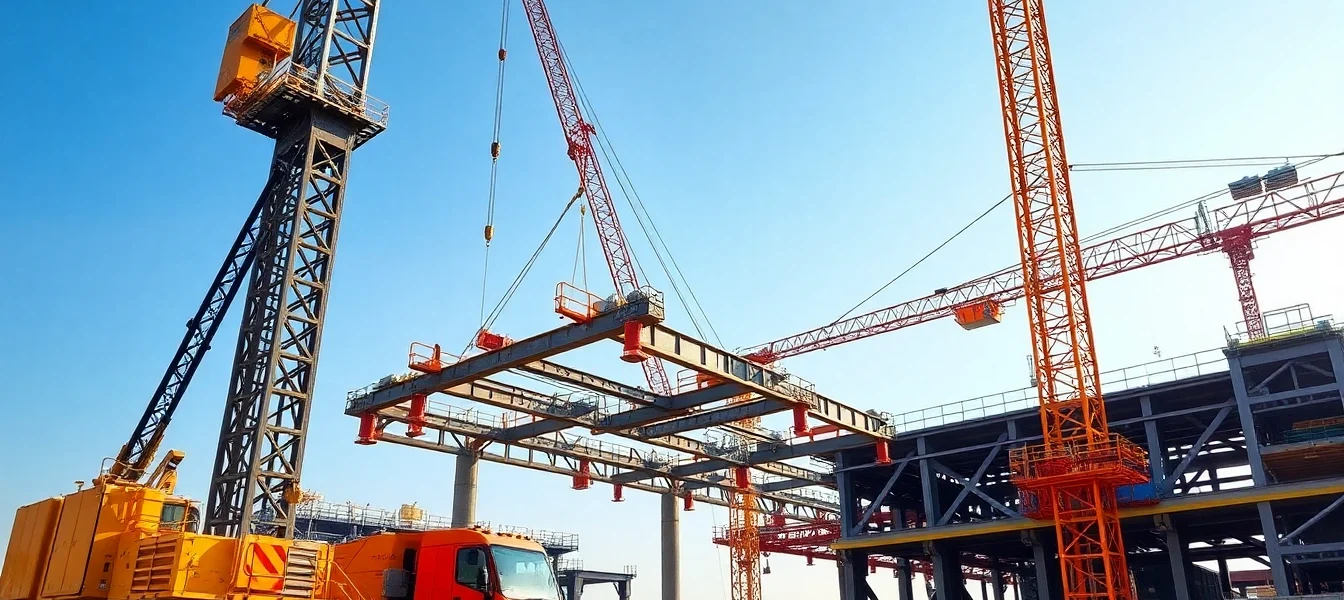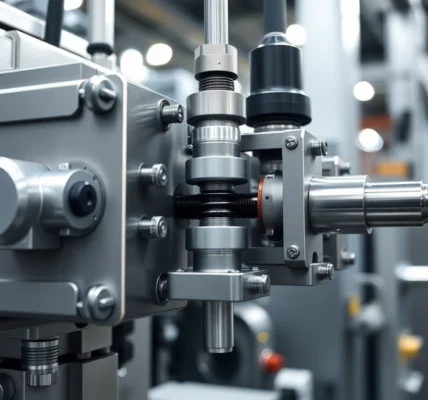Comprehensive Crane Rental Services for Construction and Industry in the UK
Understanding the Basics of Crane Rental in the UK
In the dynamic landscape of construction, industrial projects, and infrastructure development across the UK, crane rental has become an indispensable service. It provides organizations with access to specialized lifting equipment necessary for large-scale projects without the significant capital investment of buying and maintaining cranes. As the UK market continues to grow, with increasing demands for efficiency, safety, and technological advancement, understanding the fundamentals of crane rental is crucial for project managers, contractors, and business owners alike. This comprehensive guide explores the essential aspects of crane rental, helping you navigate the selection process, plan effectively, and maximize operational success.
For those seeking a reliable partner in lifting solutions, exploring options for Crane rental can significantly streamline project execution, reduce costs, and enhance safety standards. Whether you are undertaking a small renovation or a large infrastructure project, choosing the right crane and service provider is paramount.
Types of Cranes Available for Rent
The UK offers a diverse fleet of cranes tailored to a broad spectrum of construction and industrial needs. Selecting the appropriate crane type depends on factors such as load capacity, site constraints, project scale, and specific operational requirements. Here are the most common types of cranes available for rent:
- Mobile Cranes: Versatile and easy to transport, mobile cranes include truck-mounted, rough terrain, and all-terrain cranes. They are ideal for urban environments and projects where quick setup and mobility are essential.
- Tower Cranes: Essential for high-rise construction, tower cranes provide exceptional height and lifting capacity. They are often erected at the start of a project and remain in place until completion.
- Crawler Cranes: Known for their stability and heavy lifting capacity, crawler cranes are suitable for both on and off-road operations and are ideal for large-scale projects such as bridges and industrial sites.
- Rough Terrain Cranes: Designed for off-road conditions, these cranes excel in rugged sites with uneven terrain, providing high mobility and lifting power.
- Specialized Cranes: Including spider, pick-and-carry, and telescopic cranes, these are used for niche tasks or projects with tight space constraints.
Understanding their unique functionalities enables project planners to select the most effective equipment, ensuring safety and efficiency. For instance, tower cranes excel in vertical lifting during high-rise builds, while mobile cranes are often preferred for their adaptability on varied sites.
Key Factors Influencing Crane Rental Costs
Cost considerations are central to any crane rental decision. Recognizing what influences rental rates allows for better budgeting and negotiation. Major factors include:
- Crane Type and Size: Larger, more complex cranes command higher rental fees due to their capacity and operational complexity.
- Rental Duration: Daily, weekly, or monthly rates vary; longer rentals often benefit from discounts but should be balanced against project needs.
- Location and Accessibility: Urban sites with restricted access or high congestion might incur additional charges for transportation and setup.
- Complexity of the Lift: Lifts requiring multiple setups, special rigging, or precise timing can increase costs.
- Operator Involvement: The inclusion of skilled operators, required especially for large or complex cranes, impacts the overall cost.
- Insurance and Permits: Necessary safety covers and permits add to the expense but are essential for compliance and risk mitigation.
On average, crane hire costs in the UK range from approximately £650 per day for smaller cranes to several thousand pounds per week for large tower or all-terrain cranes. Recent industry reports indicate that a typical 25-tonne crane might cost around £650 daily, with larger models costing more depending on project specifications. Understanding these variables helps in creating realistic budgets and in making informed decisions when engaging with providers.
Furthermore, it is advisable to obtain detailed quotes that specify all potential costs to avoid unexpected expenses. Many providers, like Checkatrade, provide cost guides that serve as useful benchmarks for your planning process.
Common Uses and Projects Requiring Crane Rental
Crane rental services are integral to a multitude of projects across the construction, industrial, and commercial sectors. Here are some typical applications:
- High-Rise Building Construction: Tower cranes facilitate vertical movement of materials, enabling efficient skyscraper assembly.
- Bridge and Infrastructure Projects: Heavy lifting of beams, girders, and materials in large-scale infrastructure relies heavily on crawler and mobile cranes.
- Industrial Installation: Erecting industrial machinery, HVAC systems, or shipyard components often requires specialized cranes.
- Renewable Energy Installations: Wind turbine assembly and solar panel installation benefit from specialized lifting equipment.
- Removals and Demolition: Cranes are used to deconstruct buildings safely or lift heavy debris for disposal.
- Commercial Fit-Outs and Renovations: Lifting heavy or bulky elements during remodeling projects.
For example, a recent high-rise project in Birmingham successfully employed mobile cranes during phased construction, ensuring safety and timeliness. These standardized applications highlight the versatility of crane rental services available across the UK.
Choosing the Right Crane Rental Service
Assessing Provider Reliability and Fleet Quality
The foundation of a successful crane rental experience lies in selecting a dependable service provider. Consider the following factors:
- Years of Experience and Industry Reputation: Firms with a proven track record, such as Ainscough Crane Hire, exemplify reliability and safety.
- Fleet Diversity and Modernization: Providers maintaining a diverse, up-to-date fleet offer greater flexibility and enhanced safety features.
- Accreditation and Safety Standards: Ensure their adherence to UK safety regulations such as LOLER and PUWER standards.
- Client References and Reviews: Testimonials and case studies can reveal operational efficiency and customer satisfaction levels.
In-depth research and vetting are essential; partnering with recognized leaders minimizes risks such as equipment failure or compliance issues.
Available Equipment and Customization Options
Not all projects are identical; hence, customization and specialized equipment options matter. Leading providers offer:
- Varied rigging and lifting accessories
- Customizable load capacities beyond standard configurations
- Extension of jib lengths and height adjustments
- On-site modifications for particular project needs
- Complementary equipment like scaffolding or transport solutions
For demanding projects, discussing tailored solutions with providers ensures optimal equipment utilization, minimizing delays and enhancing safety.
How to Request an Accurate Quote
Obtaining precise estimates necessitates detailed communication with your chosen provider. Prepare the following information for better accuracy:
- Project location and site access details
- Projected load capacities and lifting heights
- Timeline and duration of rental
- Specific crane types and features required
- Any additional equipment or operator needs
Many companies offer online forms or direct consultation services to streamline this process. Providing comprehensive details ensures your quote reflects actual requirements, avoiding hidden costs during execution.
Best Practices for Safe and Efficient Crane Operations
Preparing Your Site for Crane Delivery and Setup
Proper site preparation is fundamental to safe crane operation. Key steps include:
- Leveling and stabilizing ground to support crane weight
- Securing clear access routes for transportation and setup
- Removing overhead electrical lines and other hazards
- Creating designated zones for crane assembly and operation
- Coordinating delivery schedules with the provider
Implementing systematic site assessments and ensuring readiness reduces downtime and mitigates risks of accidental incidents.
Ensuring Compliance with UK Safety Regulations
UK law mandates strict adherence to safety standards such as LOLER (Lifting Operations and Lifting Equipment Regulations 1998) and PUWER (Provision and Use of Work Equipment Regulations 1998). Compliance ensures legal operation, safety, and insurability. Best practices include:
- Conducting regular inspections and maintenance of equipment
- Maintaining detailed records of inspections and safety checks
- Employing certified and trained operators
- Implementing comprehensive risk assessments before operations
- Providing adequate signage and safety zones around crane operations
Many reputable providers enforce strict safety protocols, but it remains the client’s responsibility to ensure compliance throughout the project timeline.
Training and Skilled Operators for Your Projects
While rental companies supply qualified operators, ensuring your team’s understanding of safety procedures and communication protocols enhances overall project safety. Certified operators hold licenses such as CPCS or NPORS, aligning with UK standards. Additional training in site-specific hazards and emergency procedures minimizes risks.
Collaborate with the rental provider to schedule pre-operation briefings and refresher training sessions, fostering a culture of safety and efficiency on-site.
Maximizing ROI with Effective Crane Rental Planning
Scheduling to Minimize Downtime and Costs
Strategic planning is critical for cost-effective crane utilization. To optimize scheduling:
- Align crane rentals with project phases requiring heavy lifting
- Plan deliveries during off-peak traffic times to reduce logistical delays
- Coordinate with other trades to prevent scheduling conflicts
- Use multi-job rentals for extended projects to secure better rates
Regular communication with your rental provider keeps operations on track and allows prompt adjustments if circumstances change.
Integrating Crane Rental into Your Construction Timeline
Embedding crane operations into a detailed project schedule ensures seamless workflow. This includes:
- Anticipating crane needs during design and planning stages
- Synchronizing crane availability with material procurement
- Aligning installation and assembly schedules
- Allowing buffer periods for setup, maintenance, and unforeseen issues
Effective integration reduces idle time and prevents project delays, thereby maximizing overall ROI.
Tracking Performance and Maintenance for Longevity
Operational efficiency extends beyond immediate project needs. Maintaining a record of usage, inspections, and repairs provides data for:
- Proactive maintenance planning
- Performance benchmarking
- Cost control over equipment lifespan
- Maximizing the lifespan of rental cranes
Leveraging data and analytics informs future procurement decisions and enhances Safety and productivity metrics.
The Future of Crane Rental in the UK Market
Emerging Technologies and Equipment Innovations
The crane industry in the UK is experiencing rapid technological advancements, promising increased safety, efficiency, and environmental sustainability. Notable innovations include:
- Smart Cranes: Equipped with IoT sensors for real-time data on load, stability, and maintenance needs.
- Remote Operations: Use of remote controls and automation for hazardous or hard-to-reach tasks.
- Hydraulic and Electric Cranes: Reduced emissions and energy consumption compared to traditional models.
- Modular and Self-ERECTing Tower Cranes: Quicker setup with minimal site disruption.
Adopting these technologies can dramatically enhance project safety, speed, and environmental compliance.
Sustainable and Eco-Friendly Lifting Solutions
Environmental concerns are driving the industry towards greener options. Initiatives include:
- Electrification of crane fleets to reduce carbon footprint
- Utilization of renewable energy sources on-site
- Designing modular cranes for easy transport and reduced logistical emissions
- Implementing eco-friendly maintenance practices
Future market leaders will incorporate sustainability into their core offerings, aligning with UK governmental goals for carbon neutrality.
Market Trends and Industry Growth Opportunities
The crane rental sector in the UK is projected to expand consistently, driven by infrastructure investments, urbanization, and technological advances. Key trends include:
- Growth in renewable energy projects like offshore wind farms
- Increased demand for high-capacity cranes for mega-projects
- Integration of digital platforms for booking and tracking
- Enhanced safety and compliance standards as industry benchmarks
Investing in innovation and sustainability will position crane rental companies for long-term growth and competitiveness.


